Biblia Arabica
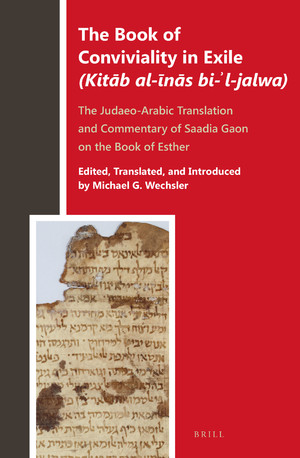
Biblia Arabica
This series published by Brill, publishes critical (including synoptic) editions of Arabic versions of individual biblical books produced in the Middle Ages and beyond, as well as studies that examine the different schools and persons that took part in this scriptural translation enterprise, analyzing their aims and methodologies, as well as the social and cultural implications of their endeavor. In addition, the reception of and reactions to these translations by Muslim authors fall within the scope of the series.
Editorial Board
- Camilla Adang (Tel Aviv University)
- Juan Pedro Monferrer Sala (Universidad de Córdoba)
- Meira Polliack (Tel Aviv University)
- Sabine Schmidtke (Institute for Advanced Study, Princeton)
- Alexander Treiger (Dalhousie University, Halifax, Canada)
- Ronny Vollandt (Ludwig-Maximilians-Universität, Munich)
Books in the Series
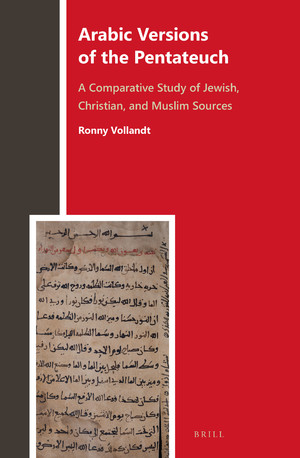
Arabic Versions of the Pentateuch (2015)
Author: Ronny Vollandt
This work offers a seminal research into Arabic translations of the Pentateuch. It is no exaggeration to speak of this field as a terra incognita. Biblical versions in Arabic were produced over many centuries, on the basis of a wide range of source languages (Hebrew, Syriac, Greek, or Coptic), and in varying contexts. The textual evidence for this study is exclusively based on a corpus of about 150 manuscripts, containing the Pentateuch in Arabic or parts thereof.
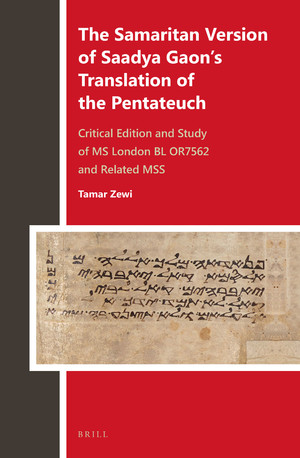
The Samaritan Version of Saadya Gaon’s Translation of the Pentateuch (2015)
Author: Tamar Zewi
This edition of MS London BL OR7562 and other related MSS, and the accompanying linguistic and philological study, discuss a Samaritan adaptation of Saadya’s Judeo-Arabic translation of the Pentateuch, its main characteristics and place among other early Medieval Arabic Bible translations, viz., other versions of Saadya’s translation of the Pentateuch, other Samaritan Arabic versions of the Pentateuch, and Christian and Karaite Arabic Bible translations. The study analyses the various components of this version, its transmission, its language, the extent to which the Samaritans adapted this version of Saadya’s translation to their own version of the Hebrew Pentateuch, and their possible motives in choosing it for their own use.
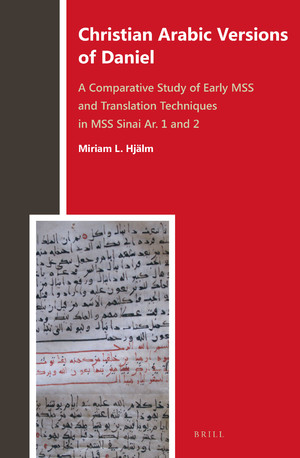
Christian Arabic Versions of Daniel: A Comparative Study of Early MSS and Translation Techniques in MSS Sinai Ar. 1 and 2 (2016)
Author: Miriam Lindgren Hjälm
In Christian Arabic Versions of Daniel, Miriam L. Hjälm provides an insight into the Arabic transmission of the biblical Book of Daniel. This book offers an inventory and a classification of extant manuscripts as well as a detailed account of the translation techniques employed in the early manuscripts. The use of the texts is discussed and the various versions are compared with liturgical Bible material. Miriam L. Hjälm shows the importance of Arabic as a tool for understanding the development of the religious heritage of Christian communities under Muslim rule. Arabic became an indispensable part of the everyday life of many Near Eastern Christians and was increasingly used next to the established liturgical languages, which remained the standard measure of the biblical text.
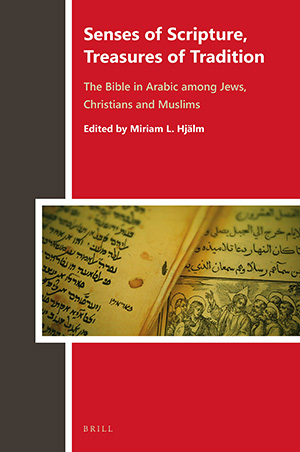
Senses of Scripture, Treasures of Tradition: The Bible in Arabic among Jews, Christians and Muslims (2017)
Volume Editor: Miriam Lindgren Hjälm
Senses of Scripture, Treasures of Tradition offers recent findings on the reception, translation and use of the Bible in Arabic among Jews, Samaritans, Christians and Muslims from the early Islamic era to the present day. In this volume, edited by Miriam L. Hjälm, scholars from different fields have joined forces to illuminate various aspects of the Bible in Arabic: it depicts the characteristics of this abundant and diverse textual heritage, describes how the biblical message was made relevant for communities in the Near East and makes hitherto unpublished Arabic texts available. It also shows how various communities interacted in their choice of shared terminology and topics, and how Arabic Bible translations moved from one religious community to another. Contributors include: Amir Ashur, Mats Eskhult, Nathan Gibson, Dennis Halft, Miriam L. Hjälm, Cornelia Horn, Naḥem Ilan, Rana H. Issa, Geoffrey K. Martin, Roy Michael McCoy III, Juan Pedro Monferrer-Sala, Meirav Nadler-Akirav, Sivan Nir, Meira Polliack, Arik Sadan, Ilana Sasson, David Sklare, Peter Tarras, Alexander Treiger, Frank Weigelt, Vevian Zaki, Marzena Zawanowska.
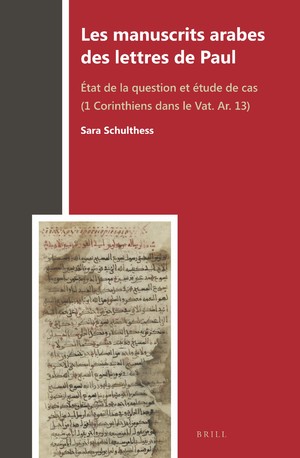
Les manuscrits arabes des lettres de Paul (2018)
État de la question et étude de cas (1 Corinthiens dans le Vat. Ar. 13)
Author: Sara Schulthess
This work provides an insight into the transmission of the Letters of Paul into Arabic. It aims to understand the lack of interest since the beginning of the 20th century for the Arabic manuscripts of the New Testament and to contribute to the current scholarly rediscovery for this field by studying the largely unexplored corpus of the Arabic manuscripts of the Letters of Paul. After a broad overview with the help of a list of witnesses, the study focuses on a specific manuscript: Vaticanus Arabicus 13. The edition of First Corinthians of this 9th century document is followed by a close analysis of linguistic and philological aspects, while the underlining of interesting exegetical points reveals the theological interest of the text.
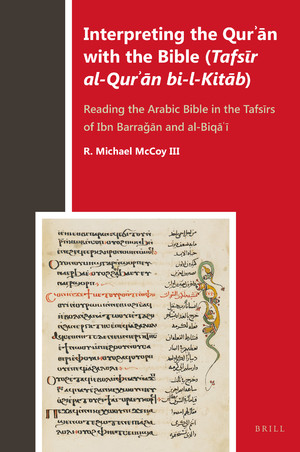
Interpreting the Qurʾān with the Bible (Tafsīr al-Qurʾān bi-l-Kitāb) (2021)
Reading the Arabic Bible in the Tafsīrs of Ibn Barraǧān and al-Biqāʿī
Author: R. Michael McCoy III
In Interpreting the Qurʾān with the Bible, R. Michael McCoy III brings together two lesser known yet accomplished commentators on the Qurʾān and the Bible: the muʿtabir Abū al-Ḥakam ʿAbd al-Salām b. al-Išbīlī (d. 536/1141), referred to as Ibn Barraǧān, and qāriʾ al-qurrāʾ Ibrāhīm b. ʿUmar b. Ḥasan al-Biqāʿī (d. 885/1480). In this comparative study, comprised of manuscript analysis and theological exegesis, a robust hermeneutic emerges that shows how Ibn Barraǧān’s method of naẓm al-qurʾān and al-Biqāʿī’s theory of ʿilm munāsabāt al-qurʾān motivates their reading and interpretation of the Arabic Bible. The similarities in their quranic hermeneutics and approach to the biblical text are astounding as each author crossed established boundaries and pushed the acceptable limits of handling the Bible in their day.
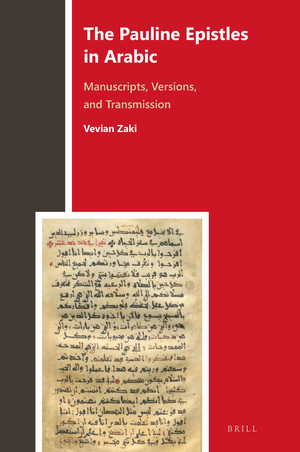
The Pauline Epistles in Arabic (2021)
Manuscripts, Versions, and Transmission
Author: Vevian Zaki
In this study, Vevian Zaki places the Arabic versions of the Pauline Epistles in their historical context, exploring when, where, and how they were produced, transmitted, understood, and adapted among Eastern Christian communities across the centuries. She also considers the transmission and use of these texts among Muslim polemicists, as well as European missionaries and scholars. Underpinning the study is a close investigation of the manuscripts and a critical examination of their variant readings. The work concludes with a case study: an edition and translation of the Epistle to the Philippians from manuscripts London, BL, Or. 8612 and Vatican, BAV, Ar. 13; a comparison of the translation strategies employed in these two versions; and an investigation of the possible relations between them.

